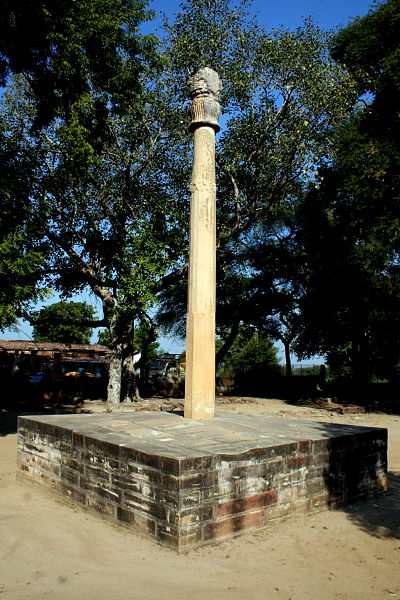The Column of Constantine is a monumental column commemorating the dedication of Constantinople by Roman emperor Constantine the Great on 11 May 330 AD. Completed c. 328 AD, it is the oldest Constantinian monument to survive in Istanbul. The column stood in the centre of the Forum of Constantine, on the second-highest of the seven hills of Nova Roma, and was midway along the Mese odos, the ancient city's main thoroughfare.
The Column of Constantine in Istanbul, made of Egyptian porphyry, seen here as purple column drums.
The Column of Constantine in its original form, with the statue of Constantine as Apollo on top
A victory column, or monumental column or triumphal column, is a monument in the form of a column, erected in memory of a victorious battle, war, or revolution. The column typically stands on a base and is crowned with a victory symbol, such as a statue. The statue may represent the goddess Victoria; in Germany, the female embodiment of the nation, Germania; in the United States either the female embodiment of the nation Liberty or Columbia; in the United Kingdom, the female embodiment Britannia, an eagle, or a war hero.
19th-century comparison between the Alexander Column, the Column of the Grande Armée, Trajan's Column, the Column of Marcus Aurelius, and "Pompey's Pillar"
Image: Snake column Hippodrome Constantinople 2007
Image: Heliodorus pillar Vidsha
Image: Jupitersaeule






